The art of mask-making and masked dance is perhaps as old as human civilization. Masks have been used for protection, disguise, hygiene as well as theatrical effect. Since time immemorial, masked dances used to be an integral part of religious activities. Masks played a significant role in ancient Egyptian Civilization and classical Hellenic and Roman Civilizations. Even now, masks are widely used in China, Japan, India, and the African countries. The tribal people residing in different parts of the country still use masks as totems and masked dances as rituals.
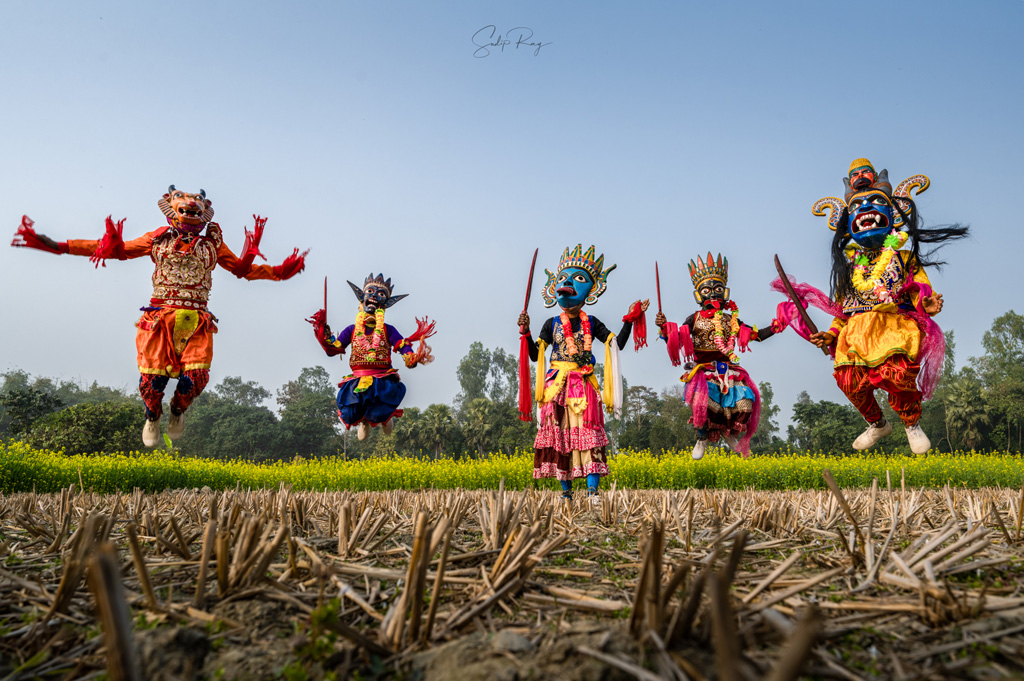
Almost every state in India has its characteristic masks such as Ramman masks of Uttarakhand, Buddhist monastic masks of Ladakh, Satra and Bhaona masks of Majuli in Assam, and Chhau masks of West Bengal, Odisha, and Jharkhand.
Apart from Chhau, West Bengal has an ancient heritage of mask-making and masked dances. You can find Rabankata Masks in Bankura district, Gombhira Masks in Malda district, Gomira Masks in Uttar and Dakshin Dinajpur, and Bagpa Masks in Darjeeling.
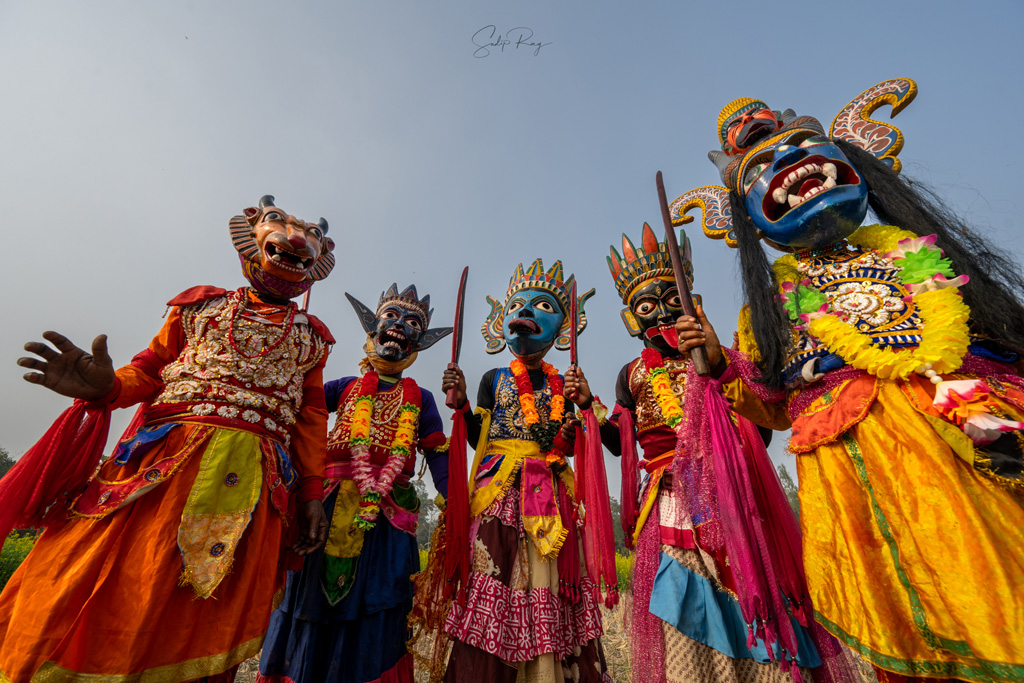
Table of Contents
What is Gomira dance:
The word ‘Gomira’ has been derived from ‘Gram Chandi’ or ‘Gram Thakur’ or the village deity. In Bengali, ‘Gram’ means village while ‘Thakur’ refers to God. The Gomira mask dance is primarily performed for worshipping the ‘Gram Thakur’ or village deity. The masked dance actually symbolizes the rise of righteous power for vanquishing evil. Moreover, this dance form is also performed to seek the blessings of the village deity for a prosperous crop year.
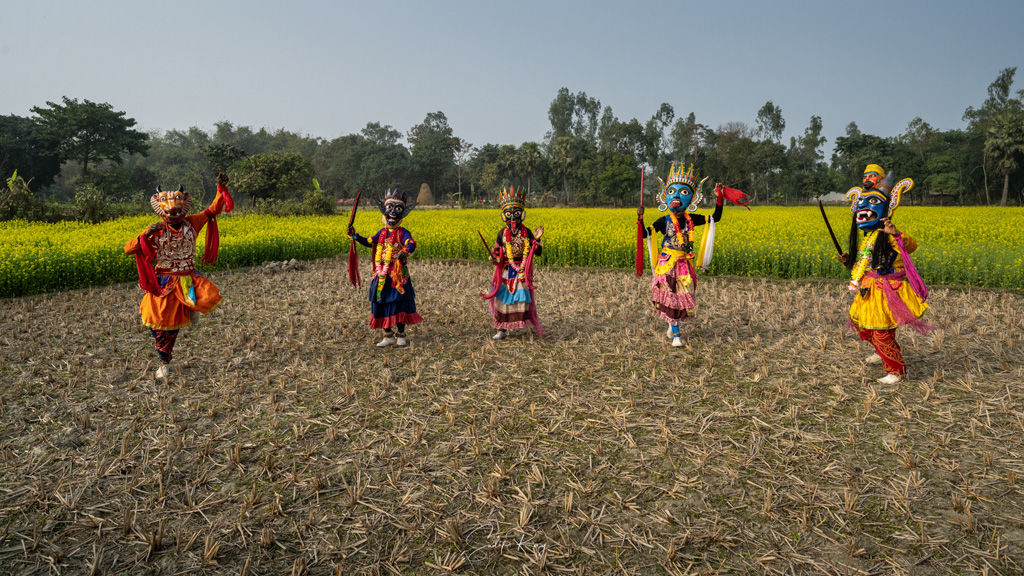
When is the Gomira dance performed:
There is no pre-determined specific time or date for performing Gomira. Generally, the masked dance is organized after ‘Chaitra Sankranti’ or the last day of Chaitra month. The dancers perform in various fairs and festivals, which take place throughout the Bengali months of Baisakh, Jaistha, and Ashaar (the English equivalent months stretching from the second half of April till the first half of July).
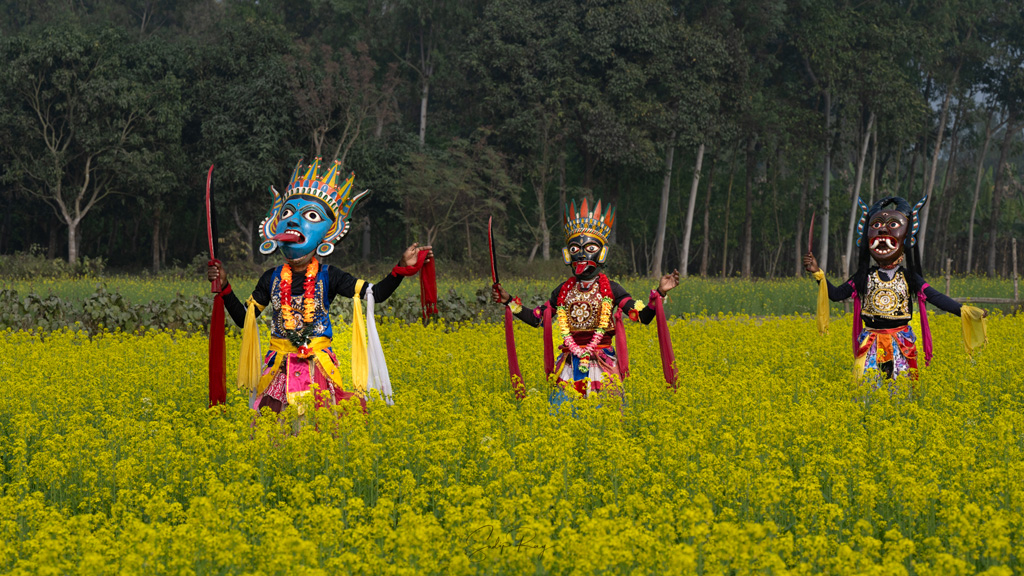
Often, the villagers pray to the village deity for certain wishes and promise to offer a Gomira mask if their wishes are fulfilled. They also offer these masks to appease the village god for the general well-being of their family.
In most of the villages, special masked dances are also organized on the day of the annual festivals of their village deities.
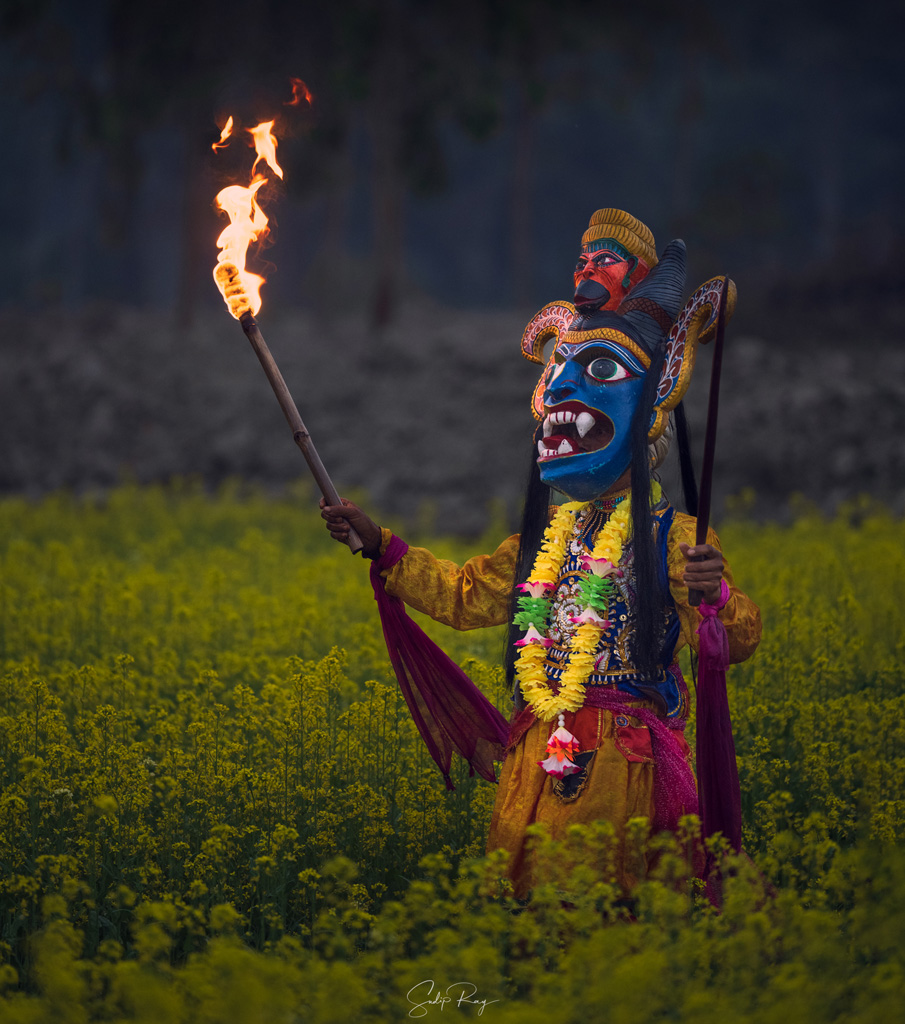
Where are Gomira artists found:
The Gomira dancers are mainly found in two districts of West Bengal – Uttar and Dakshin Dinajpur. In Uttar Dinajpur, the artists are concentrated at Chandol, Krishnabati, and Bhelai under Kaliyaganj block, as well as at Thilbil and Goyalgaon under Itahar block. In Dakshin Dinajpur, you will find Gomira performers at Mahishbathan and Khagrail under Kushmandi block as also at Chakla, Jamuna, and Borogram under Harirampur block.
How are these stunning masks made:
The Gomira dance masks are made from single wood blocks. The masks are never made by assembling multiple pieces of wood. A large, thick block of wood is carved by using hammers, chisels, and carving knives for giving it the desired face. Traditionally, Neem is the preferred wood as in Hindu religious belief, Neem tree provides the purest type of wood. However, at present, the Gomira mask makers predominantly use wood collected from Gamar trees. The ‘Gamar’ wood is mostly preferred for its durability. The wooden masks weigh 2-3 kilograms. Occasionally, Gomira masks are also prepared from paper and ‘Shola’.
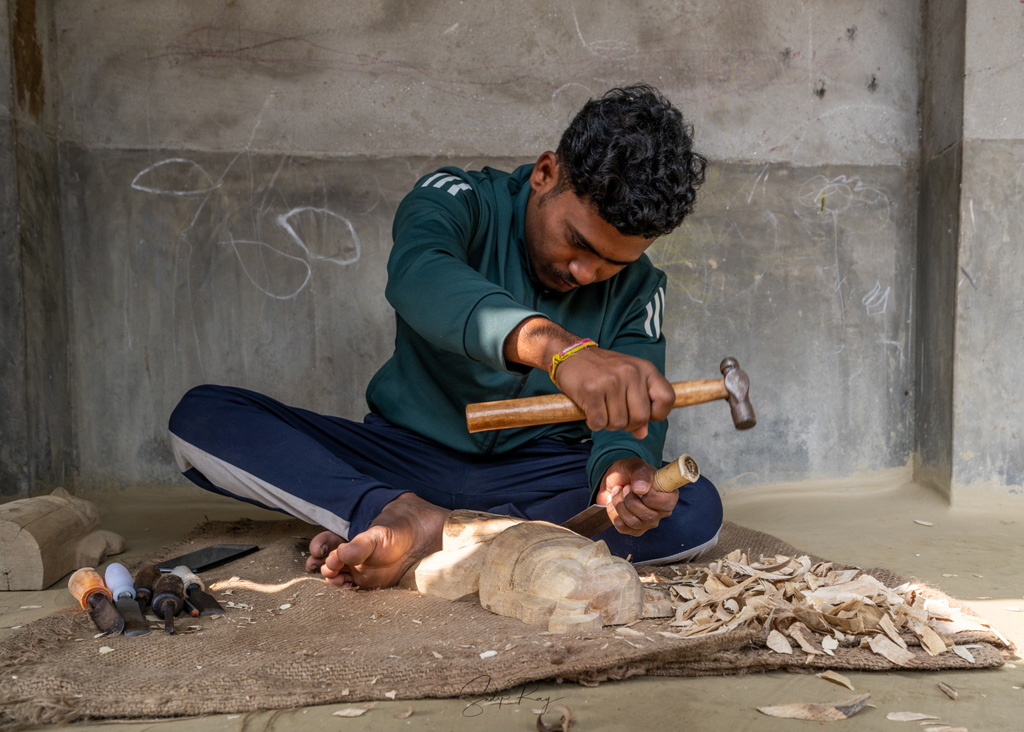
Types of Gomira dance masks:
A few interesting mythological characters are represented through the Gomira dance masks, such as:
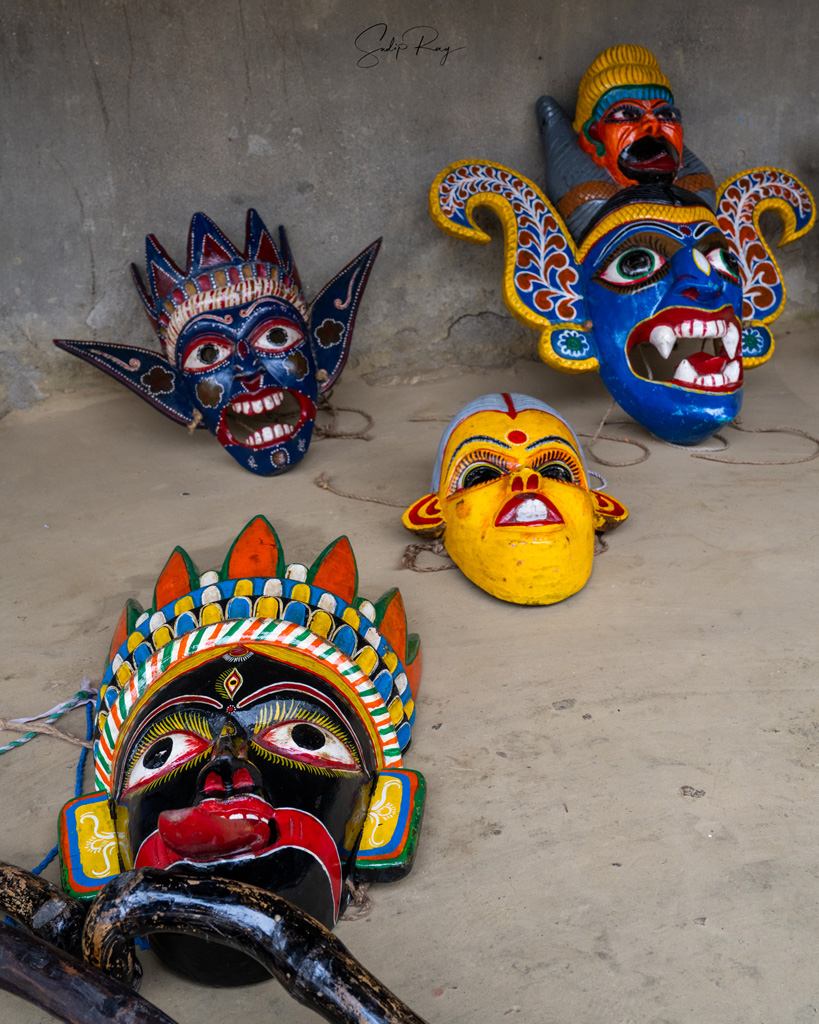
1.‘Bura – Buri’:
In Bengali, the words ‘Bura’ and ‘Buri’ means old man and old lady. The twin masks of an old man and his wife represent the human avatars of Lord Shiva and Goddess Parvati.
Traditionally, a Gomira dance recital begins with the ‘Bura – Buri’ entering the stage. The characters hold onto one another and perform a slow dance with comical postures. Shiva is often seen in the ‘Mangal’ literature of Bengal providing comic relief. It seems this dance has taken a cue from the ‘Mangal’ literature in this regard.

2.‘Bagh’ or ‘Bagha’:
‘Bagh’ means tiger in Bengali tongue. The ‘Bagh’ character appears on stage after ‘Bura – Buri’.
‘Bagh’ performs various acrobatic moves for entertaining the audience. The dancer wears a tiger mask and black–yellow striped clothes.
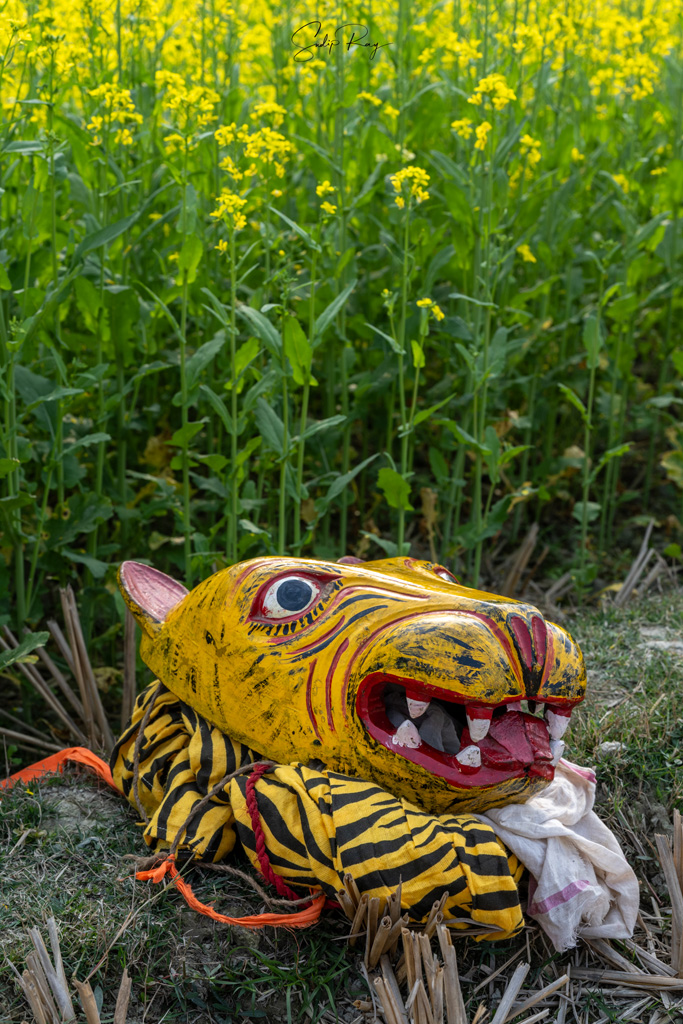
3. Chamunda Kali:
According to Hindu mythology, Chamunda Kali is a special form of Goddess Kali, who had slayed the two demons, Chanda and Munda. In Gomira, Chamunda Kali is an important character.
The mask of Chamunda Kali is larger in size as well as more elaborate. Generally, 2 – 4 dancers simultaneously perform as Chamunda Kali. They wear colorful ‘Ghagra’ or traditional skirts along with the mask. With the entrance of Chamunda Kali, the ambiance of the stage starts getting serious. The music quickens as the dancers twist their waists in a special manner and thump on the ground.
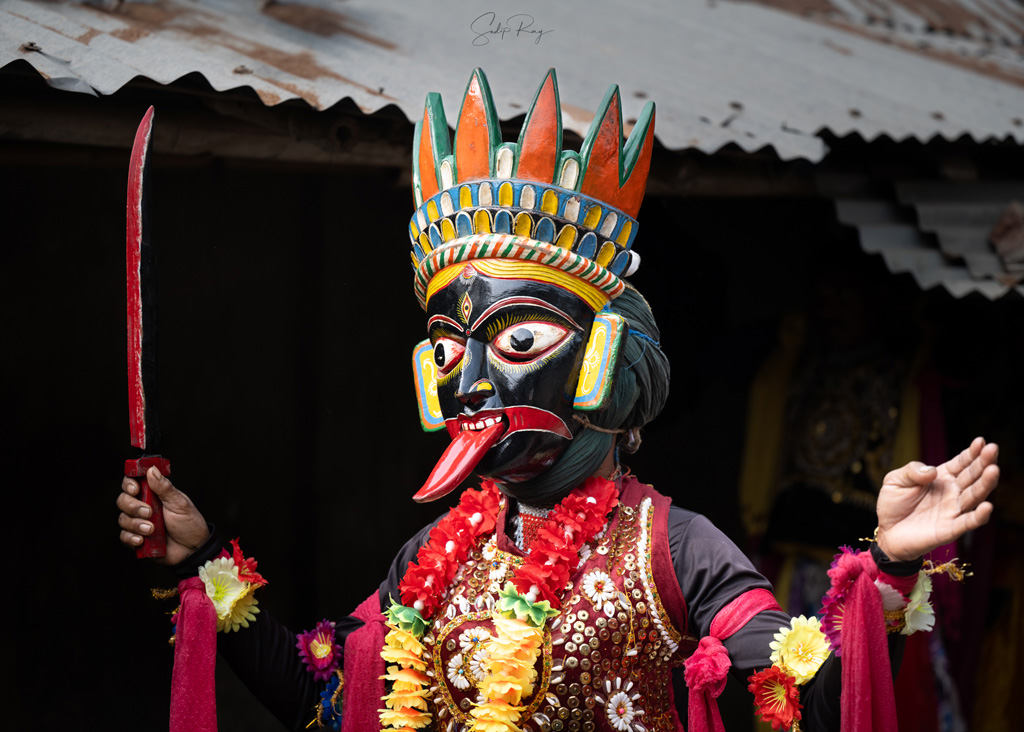
4. Dakini Bishal:
This character is believed to be the companion of Chamunda Kali. 2 – 4 dancers enact the role of Dakini Bishal.
The dancers paint their bodies black and wear ‘Ghagras’ made from sarees. They accompany Chamunda Kali in the dance.
5. Shikni Bishal:
This is another female companion of Chamunda Kali. However, the mask of Shikni Bishal is larger than that of Dakini Bishal.
2 – 3 dancers dress up as Shikni Bishal and dance along with Chamunda Kali.
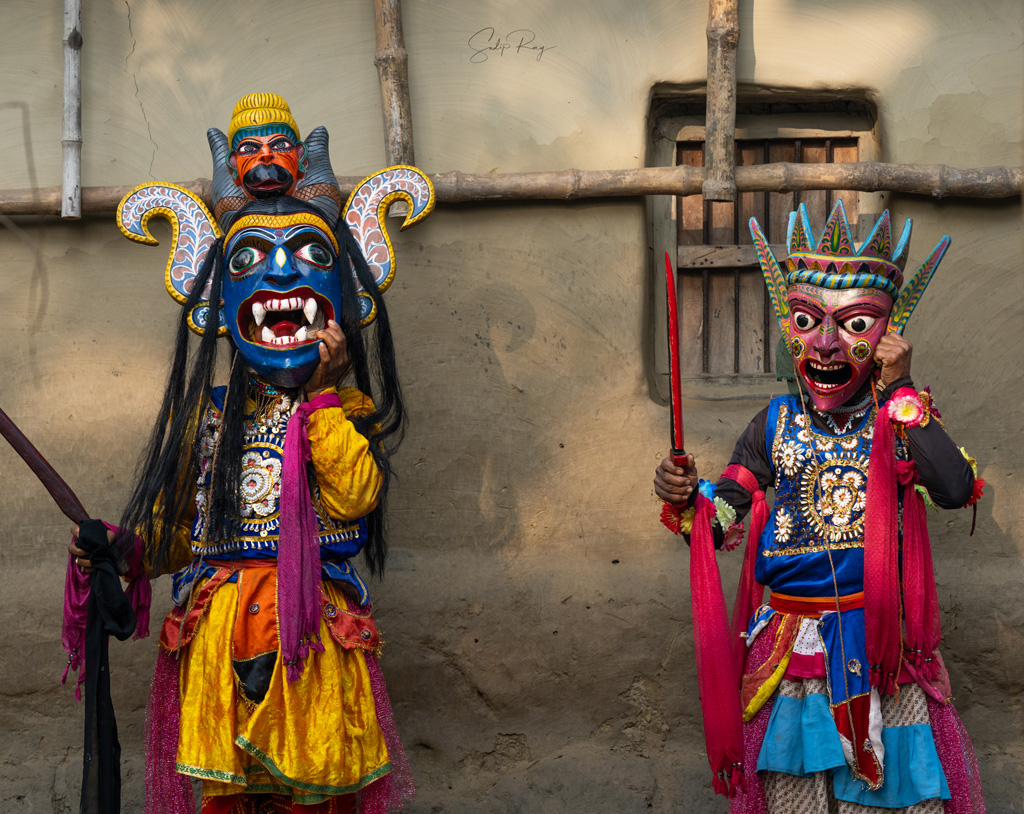
6. Nara Rakkhos:
This is the most terrifying character of Gomira dance. Performed by a single dancer, Nara Rakkhos is a savage demon.
7. Narasingha:
This is one of the 10 Avatars of Lord Vishnu. Only one dancer wears the mask of Narasingha and performs a dance at a fast tempo.
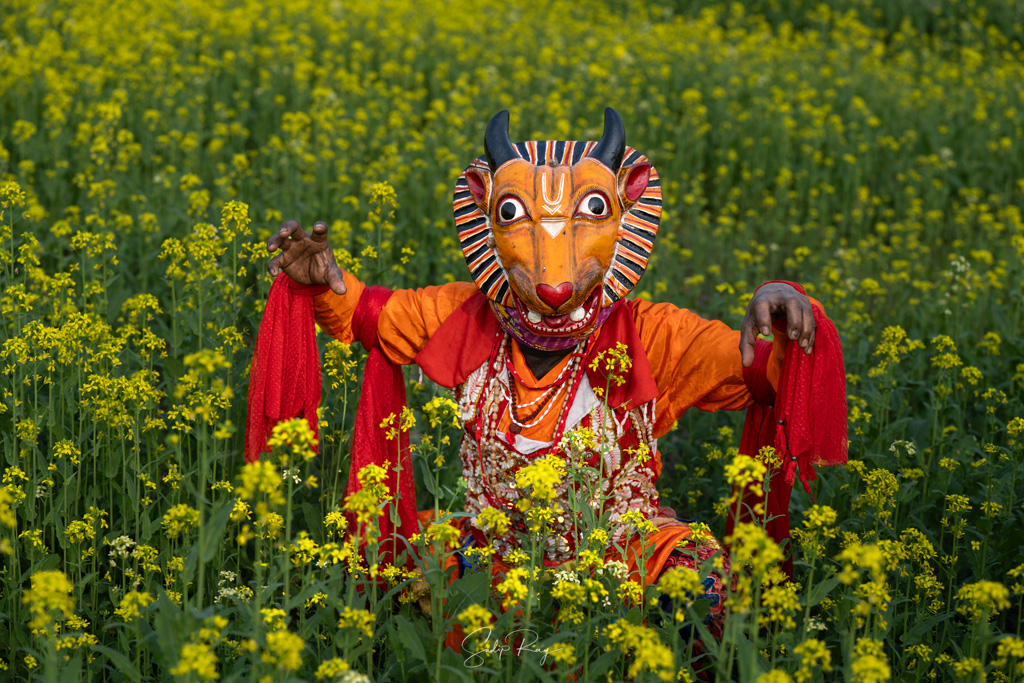
The dancers of Gomira:
The Gomira mask dance is solely performed by male dancers. Even the female characters are played by men. Women are strictly barred from the stage of masked dance.
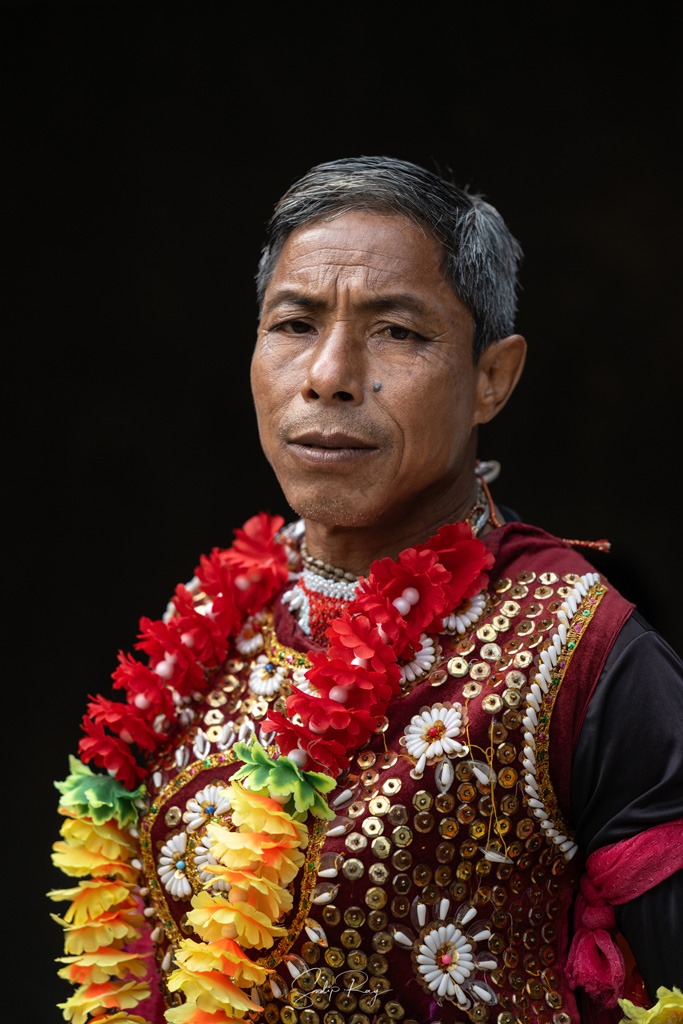
The dancers are required to follow certain rules during the period of performances. They take only vegetarian food both on the days before and after the dance. On the very day of the dance, they observe fasting and only eat steamed ‘Atop’ rice after the completion of their performance.
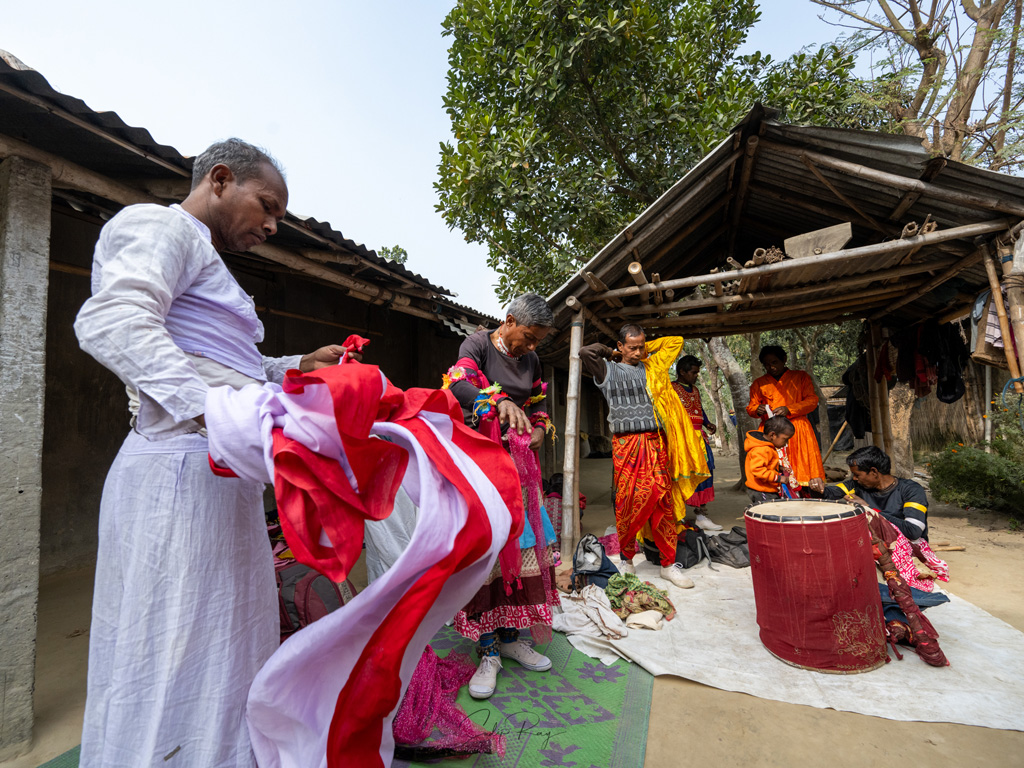
Before the dance begins, special priests called ‘Debangshi’ perform ‘puja’ for awakening the masks by sprinkling holy water, flowers, and ‘Bel’ leaves as well as chanting ‘mantras’. Afterward, the dancers wear their designated masks and start dancing.
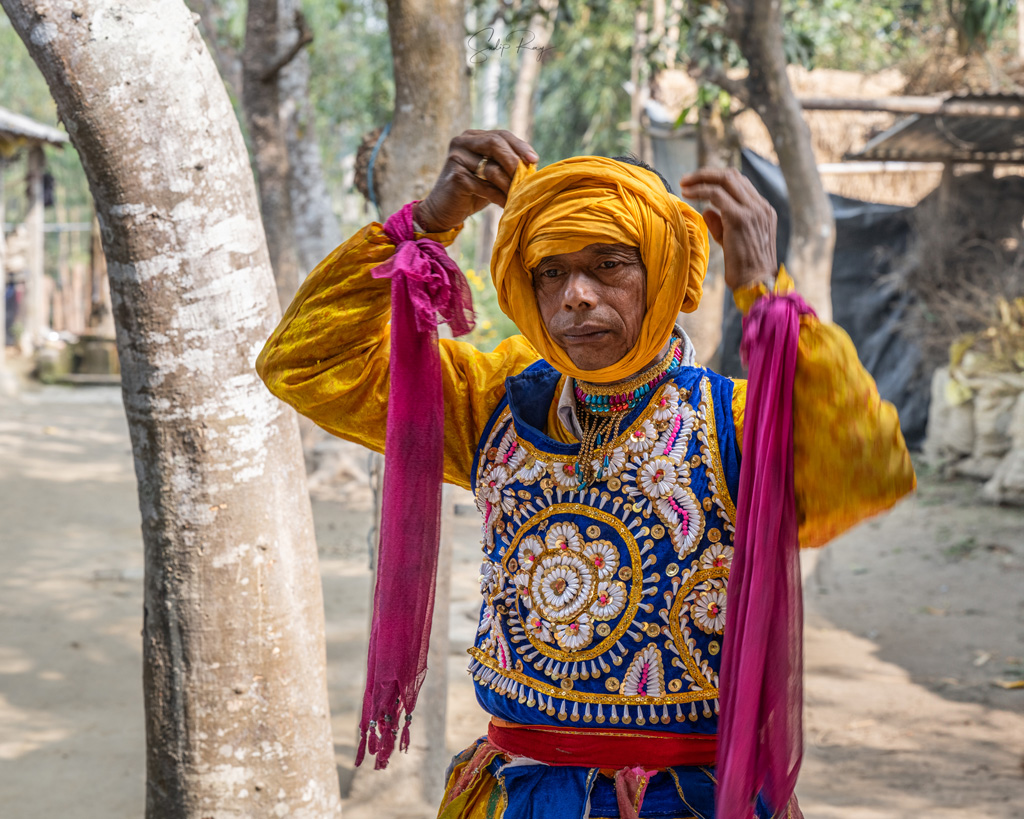
It is interesting to note that, all the Gomira characters never enter the stage simultaneously. They arrive serially on the scene one by one. The Gomira dance kicks off with the entrance of ‘Bura-Buri’ and is followed by ‘Bagh’, ‘Chamunda Kali’, ‘Dakini Bishal’, ‘Shikni Bishal’, ending with the fearsome performance of ‘Nara Rakkhos’ and ‘Narasingha’.
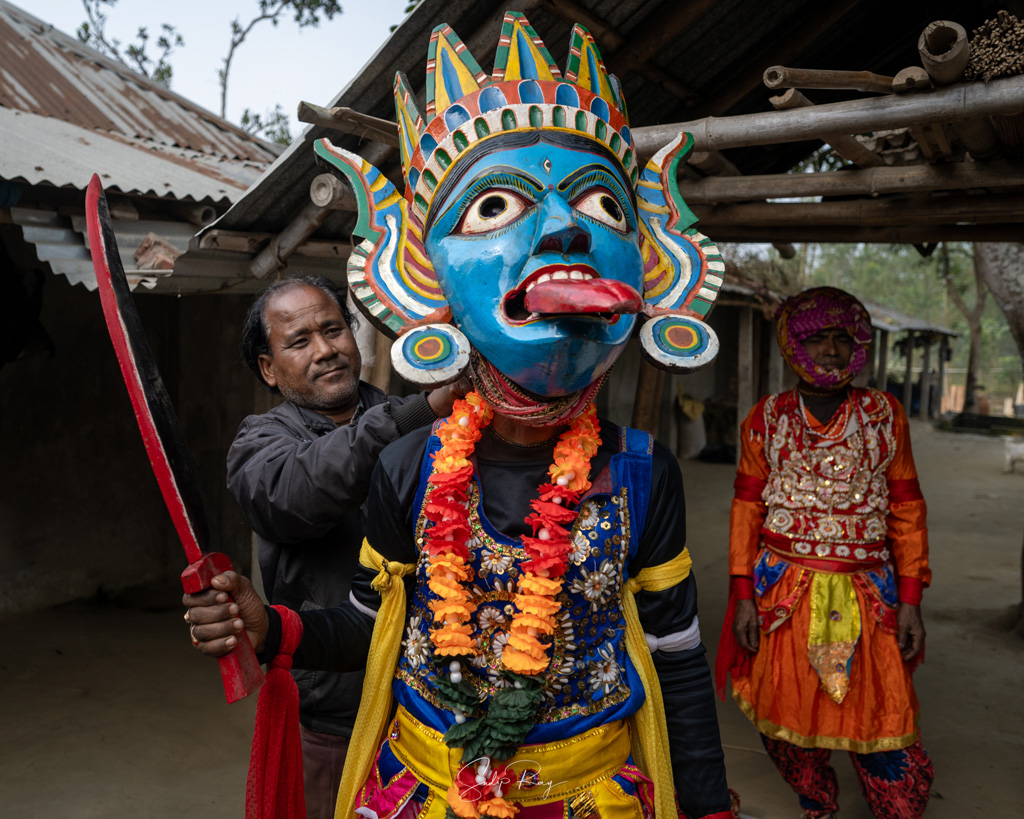
Often, the dancers enacting the role of ‘Nara Rakkhos’ and ‘Narasingha’ get possessed while dancing (locally, this phenomenon is known as ‘Bhor Otha’). During this time, they turn ferocious and uncontrollable. To appease them, the ‘Debanghsi’ offers pigeon blood to the ‘Nara Rakkhos’ while ‘Narasingha’ is pacified by offering holy water, ritualistic flowers, and Tulsi-Bel leaves.
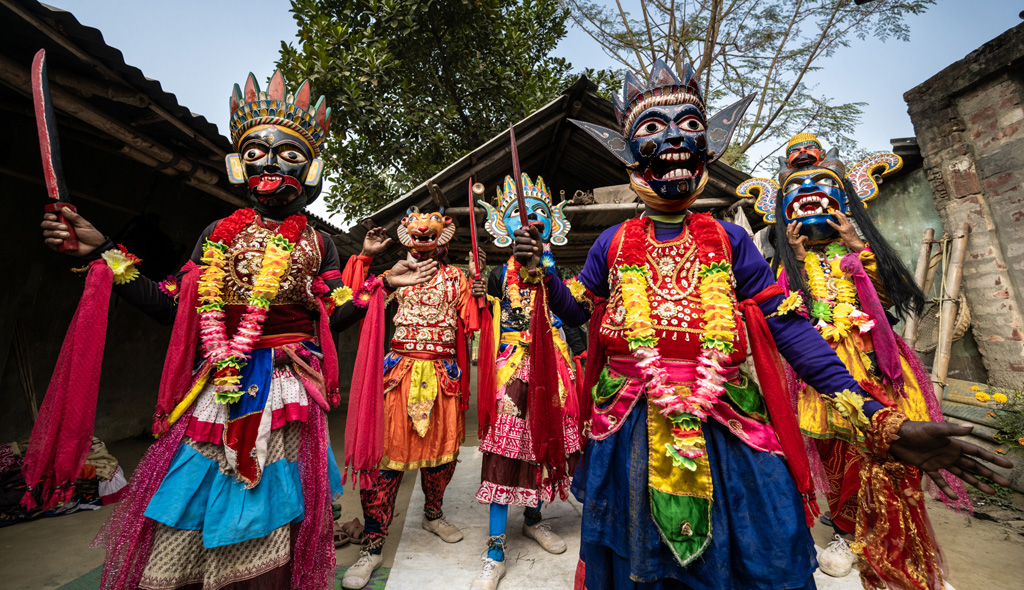
Like other dance forms, the Gomira masked dance is accompanied by instrumental music. Interestingly, the dances are not escorted by any song. The musical instruments used in Gomira are ‘Dhaak’, cymbals, and ‘Saanai’ or ‘Sahnai’. Rhythms of conch shells and women’s ululation also escort the entire performance. No song is used in Gomira.
In real life, the Gomira dancers belong to the poorer sections of society. Most of them earn their livelihood as farmers, farm laborers, and daily wage earners. Rarely, do they receive special government allowance meant for the artists.
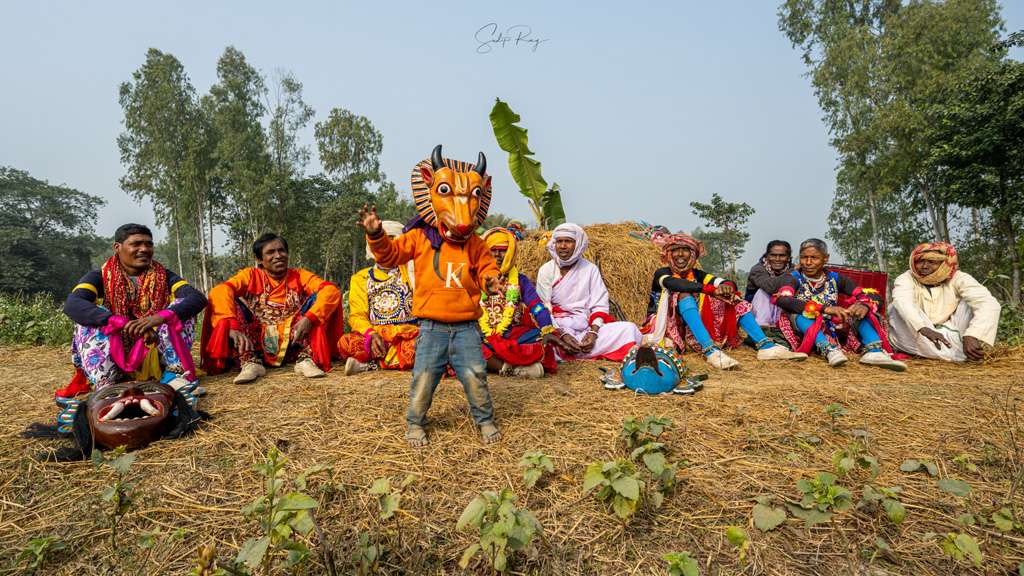
The future of Gomira dance:
Compared to the nationally and internationally acclaimed ‘Chhou’ mask dance of the Puruliya district, Gomira is a deprived art form. With the exception of Uttar and Dakshin Dinajpur, few people are aware of Gomira’s existence.
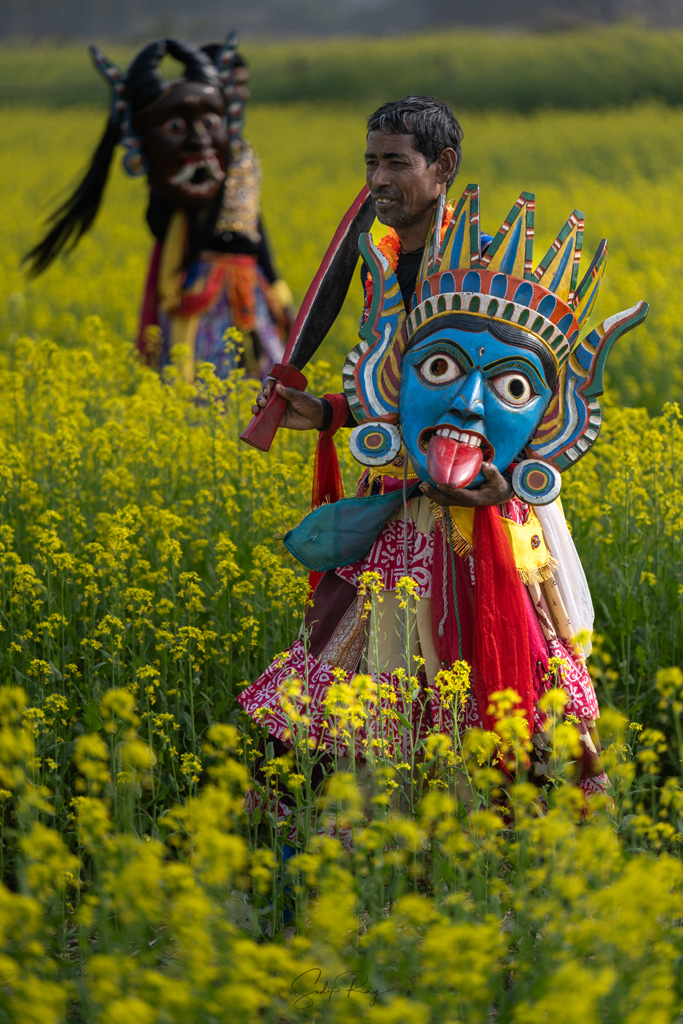
The crucial crisis faced by the art of Gomira is financial. Neither the mask makers nor the dancers receive a regular allowance from the Government. The manufacture of the Gomira masks is quite a laborious and time-consuming process. However, the makers rarely make a profit out of them. The masks are bought primarily by the Gomira dance groups. Due to their fairly high prices, the demand in local markets is almost zero. The mask makers sell their products at various handicraft fairs throughout West Bengal. Their products are also sought by the leading art galleries in the country. They also supply Gomira masks to museums and exhibitions.
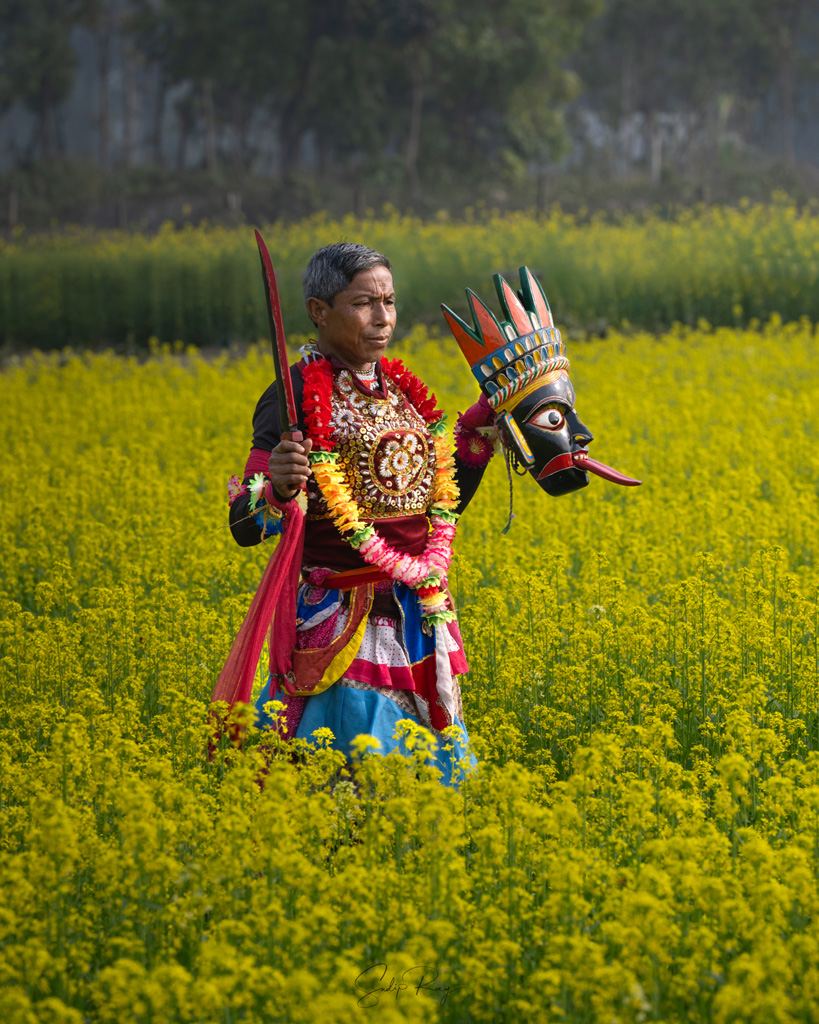
Recently, UNESCO and MSME (Ministry of Micro, Small & Medium Enterprises) has undertaken an array of constructive steps to help the Gomira artists and organized a craft hub in association with Mahishbathan Village Handicrafts Co-operative Society. This hub provides infrastructural and financial assistance to the artists as well as trains youngsters in the art of Gomira mask making. Although women are not allowed to participate in the Gomira dance, they actively take part in mask-making. Women are specially trained in making bamboo and paper masks. The society organizes an annual mask fair to popularize Gomira.
Apart from performing in their own villages, the Gomira dancers have recently started to participate in different Government organized fairs, cultural programs, and workshops. They also attend many festivals and carnivals across the country. On average, a Gomira dancer makes 16 to 20 performances per year. Lately, several photography clubs are paying dancers handsomely for photoshoots.
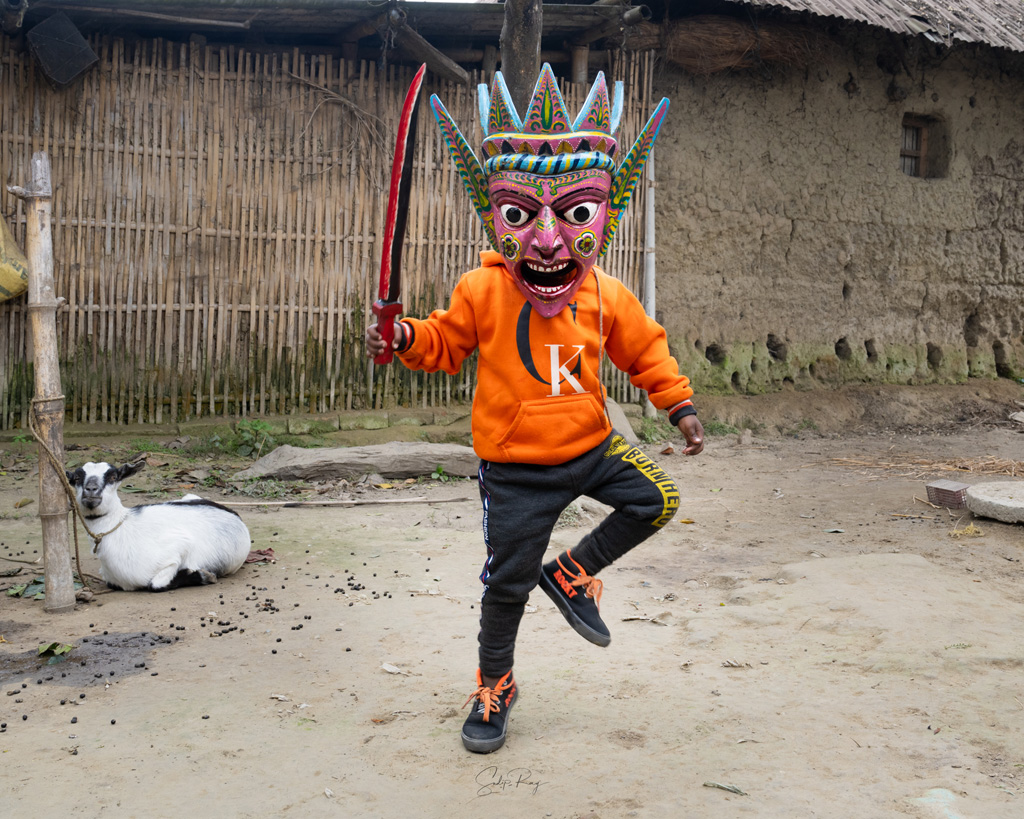
Despite limited patronage and countless adverse situations, the Gomira mask makers and dancers are trying their best to continue their age-old tradition.
Important FAQs:
1. How can I reach the spots where Gomira dance is held:
You can make either Gangarampur in Dakshin Dinajpur district or Kaliyaganj in Uttar Dinajpur district your base for exploring Gomira masked dance. For reaching Gangarampur, you have three choices of train – 13063 Howrah – Balurghat Express (departure at 7-50 AM), 13161 Kolkata – Balurghat Tebhaga Express (departure at 12-55 PM), and 13153 Gour Express Balurghat Link (departure at 10-15 PM). Additionally, there are daily Kolkata – Balurghat NBSTC and Volvo bus services. For Kaliyaganj, the sole train running from Kolkata station is 13145 Radhikapur Express (departure at 7-30 PM). You can also reach Kaliyaganj by opting for Kolkata – Raiganj NBSTC bus service.
2. Where can I stay in Gangarampur/Kaliyaganj:
Options of hotels are limited in both places. In Gangarampur, Akash Residency (contact number: 03521 – 257199) and Parijat Lodge are decent choices. In Kaliyaganj, you can stay at Jogmaya Guest House and Hotel Vinayak (contact number: 9933921321).
For an interesting account of the unique lifestyle of the Konyak Headhunters of Nagaland, read our blog here.
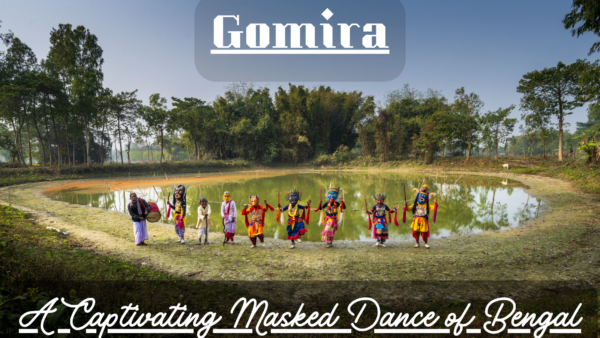
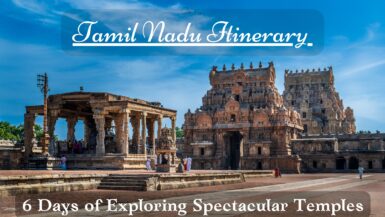
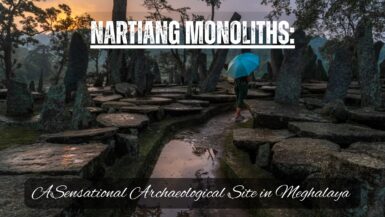

Awesome indeed. Your stories are so captivating and unique. The accompanying images are so powerful as if the real life.
Keep up the good work. Some day I will pickup you trail and visit all the places. Hopefully someday !
Thank you so much! It really motivates us to keep going 🙂